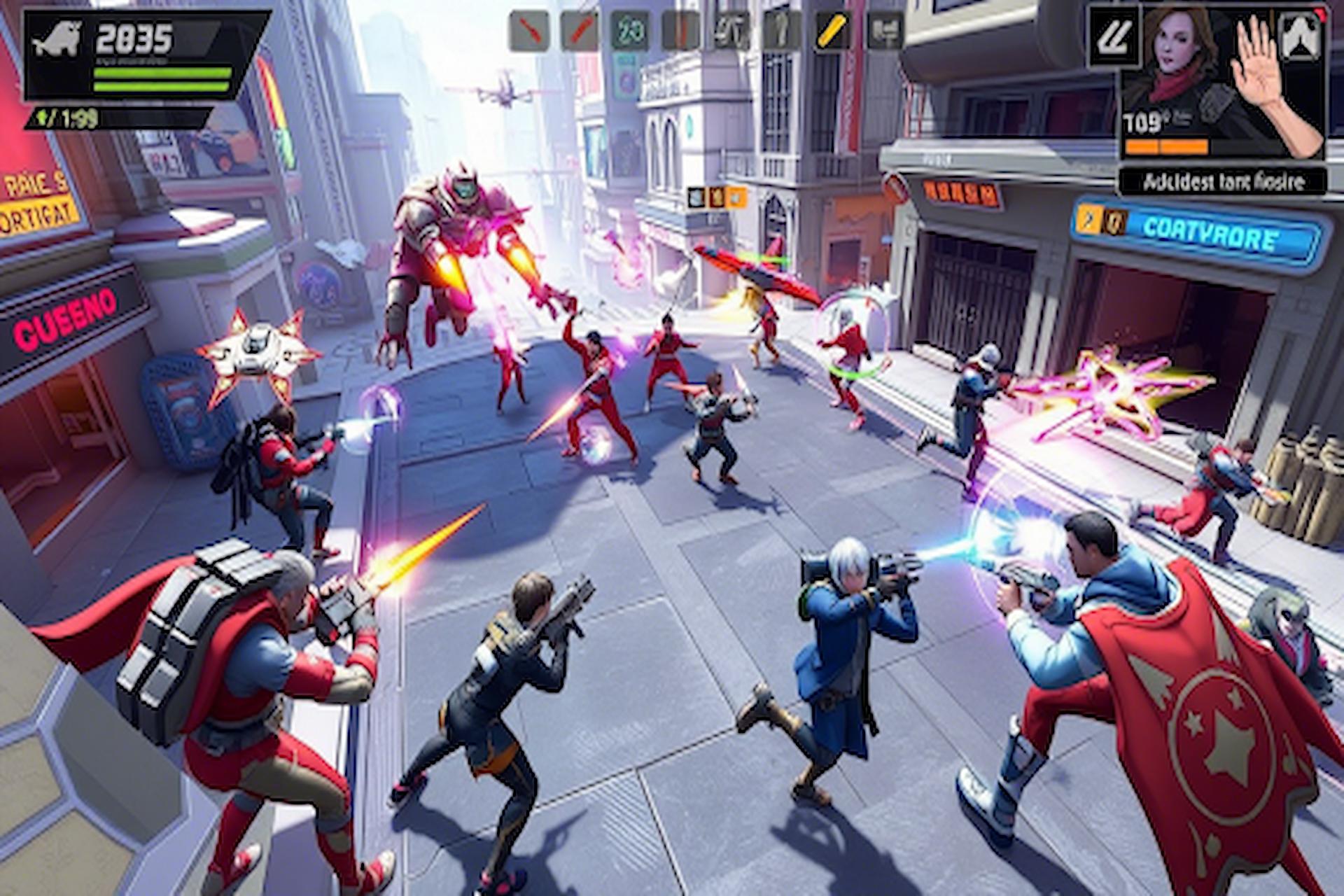The popularity of Apex Legends has sparked a revolution in the first-person shooter (FPS) genre. Unlike traditional shooters, it emphasizes unique character abilities, team dynamics, and a free-to-play monetization model. If you’re a game developer or a game design enthusiast, building a similar experience can be both rewarding and challenging.
Free-to-play shooters with hero mechanics require a thoughtful blend of gameplay design, character diversity, balanced mechanics, and engaging visuals. In this guide, we’ll walk you through the crucial steps needed to create your own hit shooter game, complete with character abilities and a monetization strategy that aligns with today’s gaming standards.
Conceptualize Your Game’s Core Identity
Before any line of code is written, you must define your game’s vision. What makes your shooter different? Is it the lore, the combat pacing, or a unique setting?
Start by defining the core gameplay loop. Will it be battle royale like Apex Legends, team-based like Valorant, or objective-based like Overwatch? Your setting
be it sci-fi, fantasy, or post-apocalyptic will heavily influence character design and ability concepts.
Also, define the tone of the game. Will it be gritty and serious, or colorful and humorous? These foundational decisions will help you stay consistent across gameplay, story, and art direction.
Design Dynamic Character Abilities
Character abilities are the heartbeat of hero shooters. Each character must feel distinct and bring strategic value to the team. Generally, each character should have:
- Passive ability (always active)
- Tactical ability (short cooldown)
- Ultimate ability (long cooldown or charge-based)
To begin, outline diverse roles: damage-dealer, support, tank, scout, etc. Assign abilities that make sense for each role and ensure they work synergistically with team play. For example, a tank hero could deploy energy shields, while a support could revive faster or heal over time.
Balancing is key. Overpowered abilities can ruin gameplay, while underpowered ones make characters irrelevant. Constant playtesting and community feedback loops help maintain equilibrium.
Build Intuitive Gunplay Mechanics
A shooter’s success hinges on its shooting mechanics. Guns must feel impactful, responsive, and satisfying. This includes sound design, recoil patterns, fire rate, reload animations, and hit feedback.
Offer a range of weapon types assault rifles, shotguns, snipers, SMGs, and explosives. Ensure weapons have unique strengths and weaknesses to encourage diverse loadouts. Like in Apex Legends, attachments and upgrades can further enhance depth.
Most importantly, your shooting system must be smooth and lag-free. Prioritize performance optimization to ensure low latency and accurate hit detection, especially in competitive multiplayer scenarios.
Choose the Right Game Engine
Selecting the ideal game engine sets the foundation for your development workflow. Unreal Engine and Unity are top choices for creating a high-fidelity, scalable shooter.
- Unreal Engine is known for its stunning visuals, powerful Blueprints system, and built-in multiplayer framework.
- Unity offers more flexibility for indie developers, an extensive asset store, and support for 2D and 3D development.
Depending on your experience and team size, choose an engine that fits your project scope and scalability needs. Integrating with tools provided by a 2D animation company can also help in creating engaging character portraits, UI elements, or animated loading screens.
Develop Engaging Game Maps
Map design directly impacts gameplay strategy. Maps should encourage tactical movement, team coordination, and vertical combat. Consider how your character abilities interact with the environment grappling hooks, teleportation, or wall climbing all require specific architectural considerations.
Design maps with a variety of zones: open fields, tight corridors, elevated platforms, and choke points. Each zone should offer distinct strategic opportunities.
Moreover, if you’re implementing a battle royale format, build large maps with dynamic elements like shrinking zones, random loot distribution, and weather changes to keep matches unpredictable.
Focus on Visual Identity and Animation
Visuals are critical in setting the tone and immersing players. Stylized art, as seen in Apex Legends, often appeals to a broader audience than hyper-realistic graphics and is more forgiving on hardware.
Work with a skilled 2D animation company to bring characters and UI elements to life. Animated icons, character select screens, and ability VFX can significantly enhance user experience.
Don’t overlook feedback animations like hit markers, shield breaks, and ability activation cues. These not only look cool but also convey important information to the player.
Implement Multiplayer Infrastructure and Matchmaking
A seamless multiplayer experience is essential for player retention. Your backend should support:
- Matchmaking based on skill or region
- Anti-cheat mechanisms
- Real-time voice and text chat
- Low-latency servers across regions
You can use services like Photon, PlayFab, or AWS GameLift to handle server orchestration. Prioritize DDoS protection and secure login systems to protect player data.
For matchmaking, design systems that reward both solo and squad play. A good balance of competitive and casual modes helps attract a diverse player base.
Design Monetization That Players Respect
Free-to-play games depend on monetization but players can detect predatory systems from a mile away. Cosmetic monetization (like skins, banners, voice lines) is the most accepted model.
Create seasonal battle passes offering tiered rewards. Limited-time events and rotating shop items can incentivize engagement without pressuring players.
Avoid pay-to-win elements at all costs. Your game should reward skill, not purchases. This is where ethical design and transparency build long-term trust and community.
Polish with Testing, Analytics, and Community Feedback
Never underestimate the power of testing. Alpha and beta tests will uncover bugs, balance issues, and UX flaws. Use analytics to track player behavior: which heroes are overused, where players die most, and which guns dominate.
Establish open channels for community feedback via Discord, Reddit, or in-game surveys. Responding to feedback builds loyalty and helps you improve the game in future patches.
Collaborating with a 2D animation company during this phase can help refresh visuals, improve UI clarity, and design event animations based on evolving player expectations.
Launch Strategically and Plan for the Long Haul
A successful launch can make or break your free-to-play shooter. Build anticipation through teaser trailers, influencer partnerships, and early-access programs. Allow content creators to test the game and share their experiences pre-launch.
Once live, have a roadmap of seasonal updates, balance patches, new heroes, and events. Games like Apex Legends thrive because of consistent content drops and responsive dev teams.
Engage your community, evolve your game, and never stop innovating. A live-service model requires ongoing commitment but can result in a loyal fanbase and steady revenue.
Conclusion
Creating a free-to-play shooter with character abilities is an ambitious yet achievable goal. By combining strategic gameplay design, thoughtful monetization, engaging visuals, and strong backend infrastructure, your game can stand shoulder-to-shoulder with genre leaders like Apex Legends.
Partnering with experienced teams such as a professional 2D animation company for visual storytelling and UI can further elevate your game’s appeal. Ultimately, success lies in delivering value, respecting your players, and crafting an experience that’s both competitive and fun.



